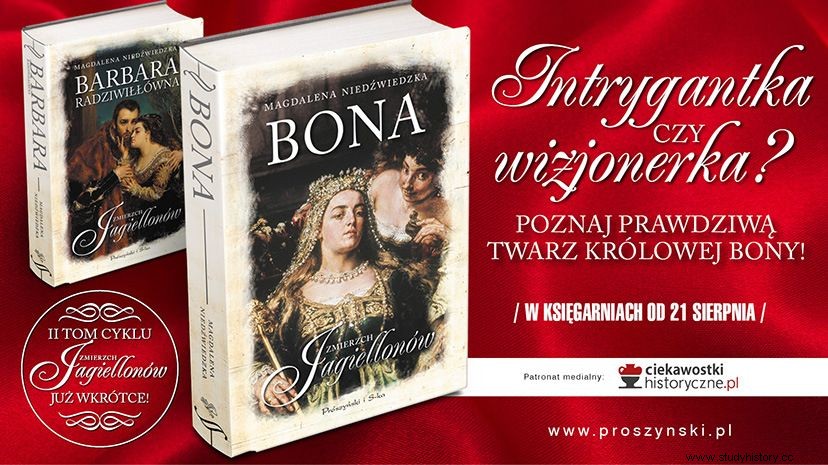The Valesian or Habsburg dynasties could boast a legion of bastards. History is silent about the illegitimate children of the Polish Jagiellonian dynasty. But does this mean that our rulers were as polite and virtuous as they wanted to be?
As for children, right or wrong, the most fortunate among the Jagiellonians was Kazimierz Jagiellończyk, who ruled in the years 1447-1492, the youngest son of Władysław Jagiełło and Zofia Holszańska. However, he was certainly not the greatest of the rioters and debaucheers of the family. Today we would rather say that he was downright… boring.
As Maciej from Miechów writes, following his father's example, he avoided alcohol, often went to the baths and was physically active. Its only drawbacks are - if you believe the same chronicler - passion for the pleasures of bed and table. It is said that the king eagerly "feasted and ate" and did not avoid affection.
Despite these suggestions, no royal lovers' names are recorded in history. We also know nothing about any bastards. And there could have been a lot of them.
The form of Kazimierz is evidenced by the fact that Elżbieta Rakuszanka from the Habsburg dynasty, married in 1454, during almost thirty years of her life, gave him as many as thirteen children including six sons! The Queen, respected and avoiding any scandals, received the honorable title of the Mother of Kings (and one saint).
A king who was a "lord of war" and a staunch homebody
The third son of Kazimierz, Jan Olbracht, turned out to be completely different from the sedate father. The prince born in 1459 in Krakow was called "the lord of war". It would be hard to consider him handsome:Maciej from Miechów writes about him that he was tall, his eyes were hazel, and his face was “oozing”.
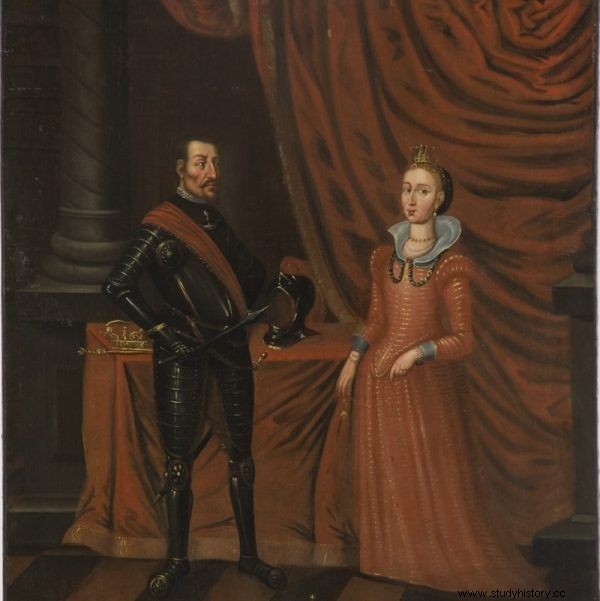
Often the rulers had numerous offspring. Among the record holders, we can mention King Kazimierz Jagiellończyk, who had thirteen children.
He often walked with a sword at his belt. He died a bachelor, but he did not shy away from women. Apparently even "he was kind of insistent on carnal love."
This Jagiellon was no stranger to debauchery, drenched games and street fights. Once, as the chronicler Marcin Bielski wrote, Jan - probably wandering around the chalice - "came across some drunken men who dealt with him and wounded through the face".
The event, later immortalized by Master Matejko, took place at night in the courtyard of a rich bourgeois tenement house in Krakow.
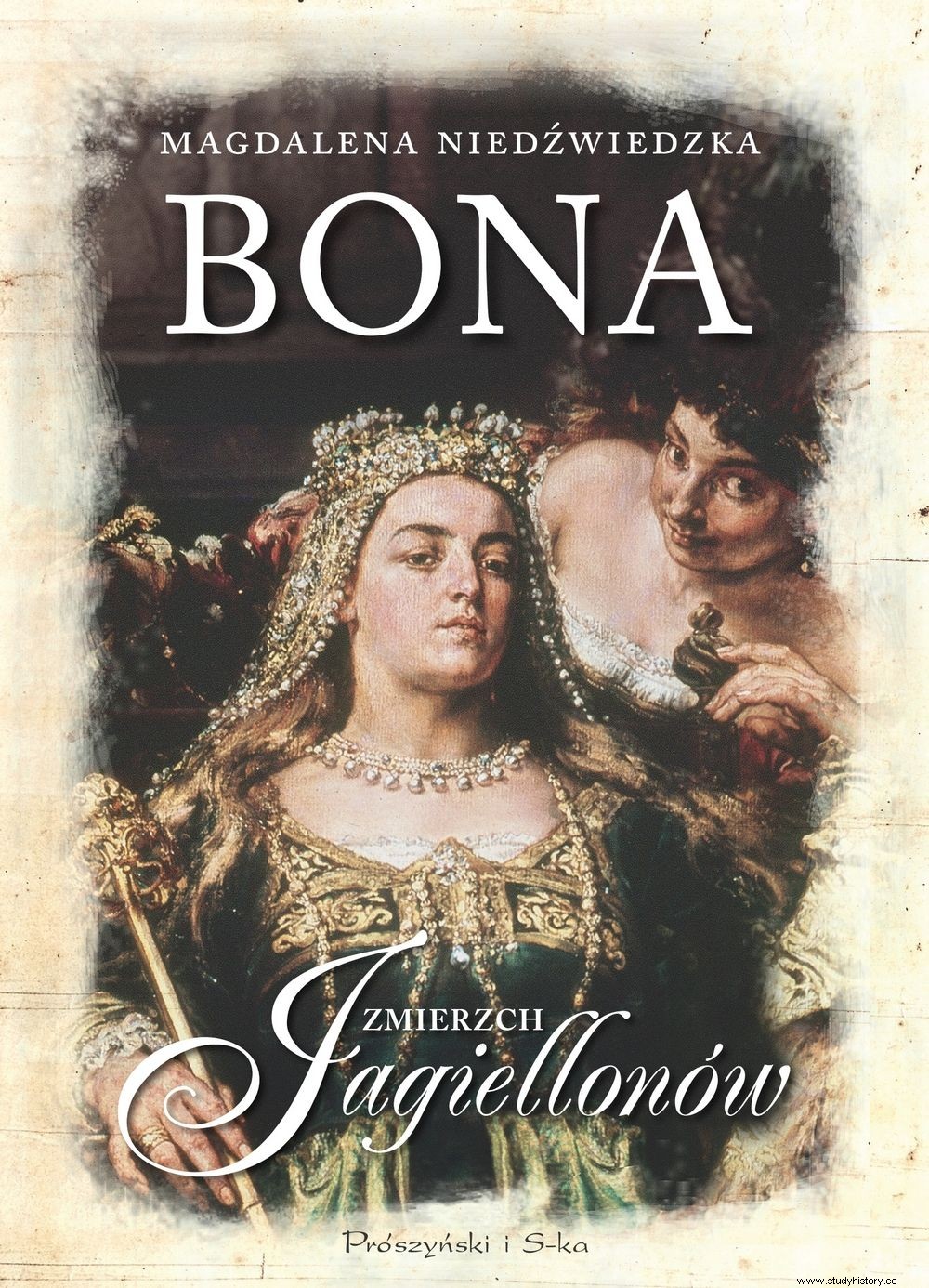
The article was inspired by a biographical novel by Magdalena Niedźwiedzka called "Bona" (Prószyński Media 2018).
The king was caught during a love tryst with a certain townswoman, a certain Mustache, shown in the painting in her loose hair and flowing underwear. The rivals managed to hurt him. The ruler was supported by his teacher and friend Kallimach, i.e. Filippo Buonaccorsi - an Italian humanist, diplomat, writer and poet. In the background you can see two men disarming an enraged attacker.
Matejko's work is only an artistic interpretation of the report conveyed by Bielski. It is worth remembering, however, that the brave ruler by no means died in the war. He was killed by syphilis after less than a decade of reign . He did not leave behind any known bastards.
Jan's younger brother, Aleksander Jagiellończyk, could have had similar health problems. Bielski wrote about him that he was “broad shoulders, he had strength in himself”. His rule brought a bit of boredom after the entertaining Olbracht. He was a calm and stable man. He married Helena Moskovskaya, daughter of Ivan Srogi, whom he sincerely loved, and with reciprocity.
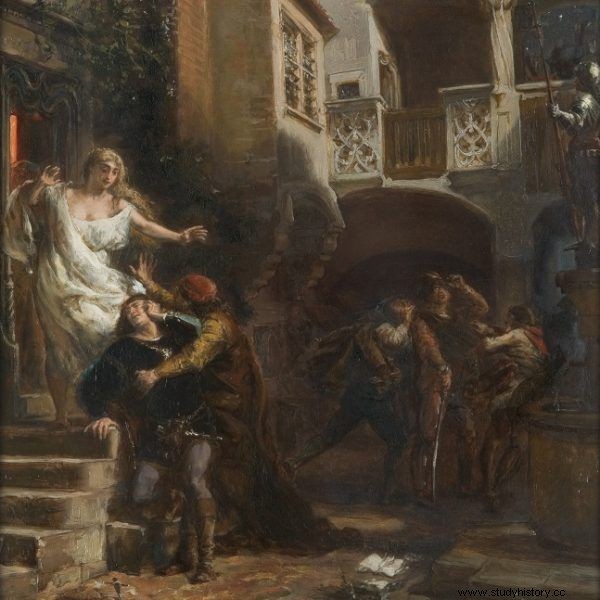
Jan Olbracht's nightly love conquests led to the fact that the ruler died of a venereal disease.
However, they did not have children - Helena had a miscarriage at least twice. Perhaps it was hereditary Jagiellonian syphilis? Like his predecessor, it drove the king into the tomb in the prime of his life. And she also took the chance to become a father.
The king tearing the ropes and breaking the horseshoes
After Alexander's death in 1506, the Polish throne was taken over by Zygmunt I, who was then 40 years old. The new king, still a bachelor, was reluctant to marry. This is because… his family life was quite successful. His love for over a decade has been a Moravian townswoman, Katarzyna Ochstat, known as Telniczanka. The couple already had a son and two daughters.
However, when Zygmunt put on the crown, he had to dismiss his mistress and look for a wife suitable for his position. It was Barbara Zapolya, who gave birth to two more daughters to her husband and died shortly after the second childbirth. After her, the king married Bona Sforza.
The Polish ruler sincerely loved both wives, as did his children - both righteous and illegitimate. He did not treat the latter worse. He assigned his son John to a priestly career, having efficiently secured the Pope himself to legitimize his birth. He married his daughters, Regina and Katarzyna, to the wealthy gentlemen:Hieronim Szafraniec of Pieskowa Skała and Count Montfort Jerzy II.
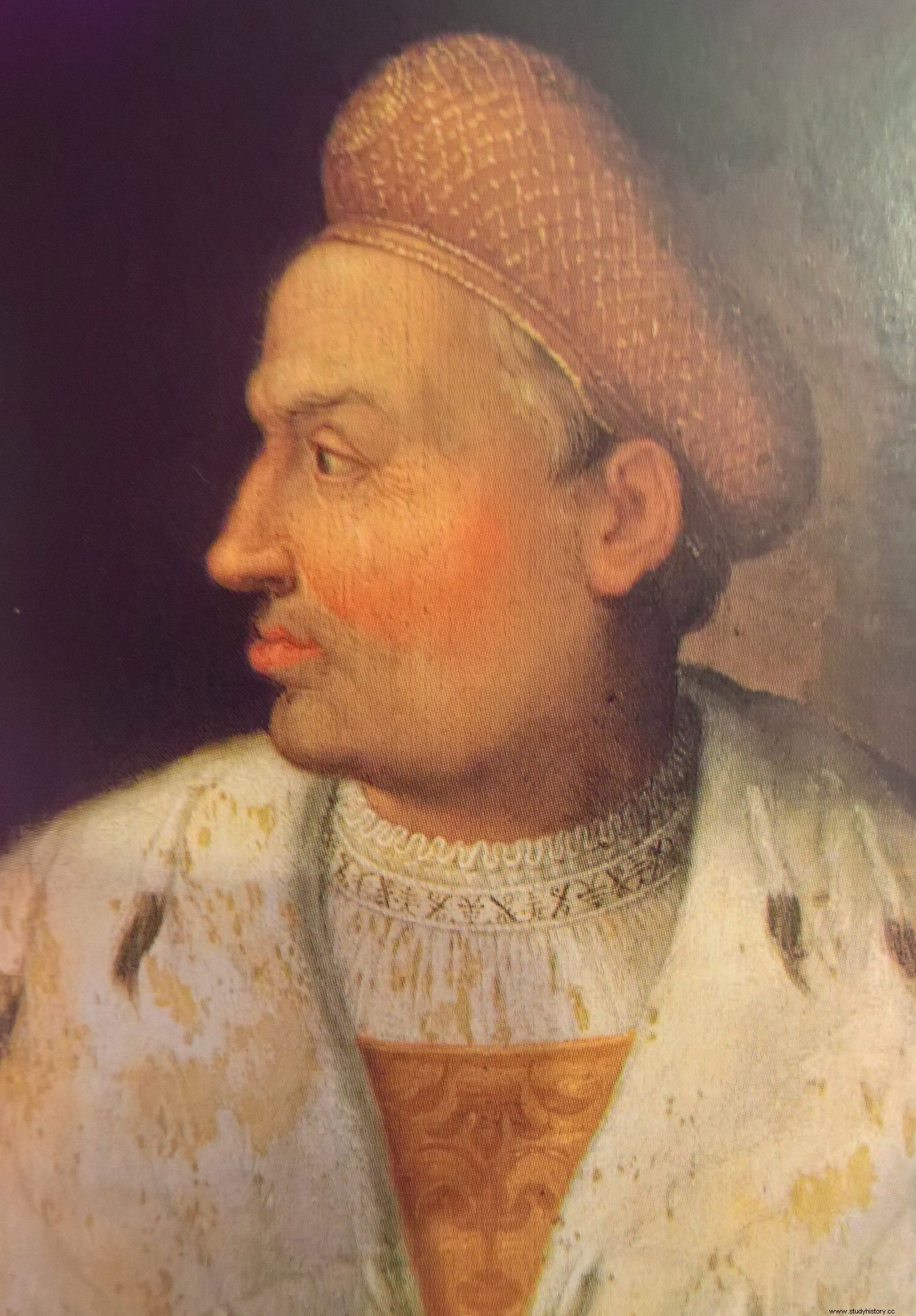
Before the coronation, King Zygmunt I the Old lived in a relationship with the townswoman Katarzyna Telniczanka, with whom he had three children.
Zygmunt also continued to support his ex-partner. He secured it materially, awarding a salary of 100 ducats and buying a tenement house on the Krakow market square. He also found her husband:an elderly Crown Treasurer, Andrzej Kościelecki.
Was Kościelecki happy with this turn of events? It's hard to say. He certainly couldn't complain about the appearance of his wife, who was considered very attractive. Apparently, there were many who envied her king.
What did the queen have to say about those favors shown to her mistress? After Catherine's death in 1528, Bona ... brought her body to Krakow and organized a beautiful funeral. The spirit of misfortune certainly accompanied her during the ceremony, when - as Kamil Janicki writes in "Ladies of the Golden Age" - "she watched her husband wipe his tears with a stony face, recalling her carefree relationship with a Moravian bourgeoisie".
However, there are many indications that she showed great understanding for Zygmunt's past relationship. She maintained a close and cordial relationship with his son, the Bishop of Vilnius, Jan.
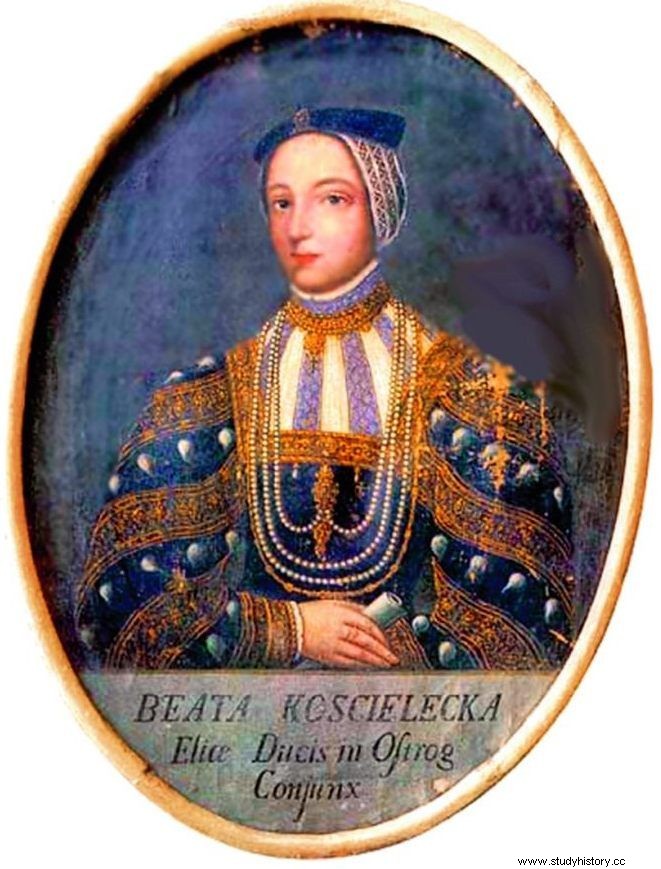
According to rumors, Beata Kościelecka was the illegitimate daughter of Zygmunt I Stary.
Bona also took care of teenage Beata. The girl, although born in a marriage with Kościelecki, was rumored to be the daughter of Zygmunt. Maybe that is why her husband was chosen fabulously wealthy Prince Eliasz Ostrogski? Interestingly, it was from this relationship that the famous Halszka Ostrogska was born, the heroine of Kraszewski and Szujski's plays, played many centuries later on the stage by Helena Modrzejewska herself.
A king who had a lover legion
Zygmunt I the Old was certainly not a sanctimon. His premarital adventures, however, seem trivial compared to those of his son and successor - Zygmunt August. He got married three times. Two of his wives were sisters - unfortunately neither of them gave him neither heirs nor marital happiness. He experienced this, for a short time, only at the side of Barbara Radziwiłłówna, who was hated by the court, with whom he was first connected by a passionate romance.
But the informal relationship with Radziwiłłówna was not the first in the life of the last Jagiellonian. At the age of only 17, he became involved with Diana di Cordona, who was more than two decades older. It is said that the affair was initiated by the mother of the future king. It was trying to keep him out of politics.

The article was inspired by a biographical novel by Magdalena Niedźwiedzka called "Bona" (Prószyński Media 2018).
By the time he turned thirty, Zygmunt had already had a few love affairs, one failed marriage - and no children. The fact that the king, who did not shy away from women, had not yet had marriage or illegitimate offspring might have been disturbing. The more so because after the death of his beloved Barbara in 1551 and the unsuccessful marriage with the sister of his first wife, the king soothed his sorrows in the arms of his next lovers given to him by the courtiers.
One of them was Zuzanna Orłowska, with whom the king reportedly lived for seven years. He also became involved with a poor noblewoman, Anna Zajączkowska, who belonged to his sister's fraucimer. He even kidnapped her from court under the guise of marriage.
However, it was only Barbara Giżanka, with whom Zygmunt started an affair during the lifetime of his wife Katarzyna Habsburżanka, who was able to wrap the ruler around her finger. She even convinced him of the paternity of her daughter, born in 1571.
Giżanka her contemporaries already called "noble harlot", "evil white-headed girl" and "mother of the puppies". Nuncio Vincent Portico wrote in a dispatch to the curia about the king's paternity: "A little girl was born of a harlot. He considers them his, but it is not widely believed. ” . Why was the woman's claims so much doubted? At this stage, most of the court felt that the king could not have children. The blame was placed on Diana or Barbara Radziwiłłówna, who reportedly infected him with syphilis.
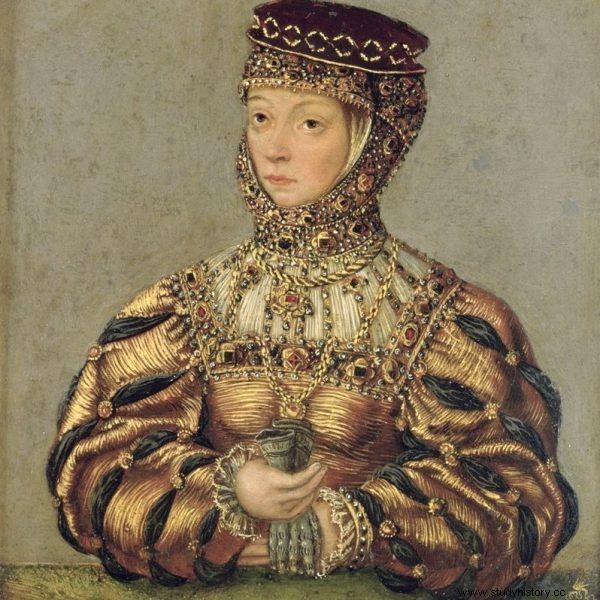
Barbara Radziwiłłówna had an affair before her official marriage with Zygmunt II August.
The situation that developed at the court around the new misfortune was simply scandalous. Ailing and weird, Sigismund Augustus did not seem to notice it. To protect the favorite, he sent her to Podlasie, and then - despite a serious illness - followed her. Soon, on July 7, 1572, he died. He was only 51 years old! The giżanka turned out to be so insolent that it initiated the robbery of the royal property while it was still lying on its deathbed. She stripped her longtime lover and protector even of her posthumous shroud.
Has she paid for it? In no case. The case was silenced, and a year after the death of the king, Giżanka married Michał Woroniecki, the prince of Volhynia. She bore him six children. When she died in 1589, the throne after Anna Jagiellonka and her husband Stefan Batory was taken over by Sigismund III Vasa.
Inspiration:
The article was inspired by a biographical novel by Magdalena Niedźwiedzka entitled Bona , Prószyński Media 2018.

